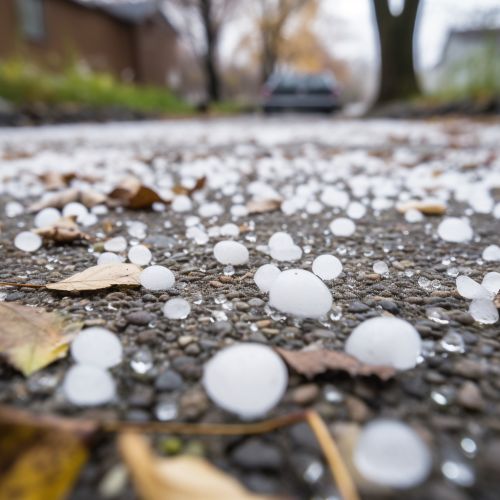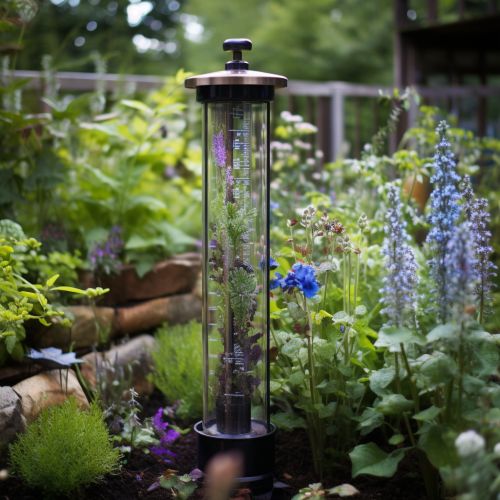Precipitation
Introduction
Precipitation, a crucial component of the Earth's water cycle, is the process through which water vapor in the atmosphere condenses and falls to the earth's surface. This phenomenon, which includes various forms such as rain, snow, sleet, and hail, plays a vital role in the distribution of water resources around the globe. Precipitation is not only essential for the survival of all terrestrial life forms but also significantly influences the world's climate patterns and weather systems.


Types of Precipitation
The type of precipitation that occurs depends on the temperature profile of the atmosphere. The four main types of precipitation include rain, snow, sleet, and hail.
Rain
Rain is the most common form of precipitation and occurs when water droplets in the atmosphere combine to become heavy enough to fall to the ground. Rain typically occurs when warm air rises, cools, and condenses into clouds. The process of condensation often involves complex physical and chemical interactions, including nucleation, where tiny particles known as cloud condensation nuclei provide a surface for water vapor to condense.


Snow
Snow is a type of precipitation that forms when atmospheric water vapor freezes into ice crystals. These crystals then aggregate into snowflakes, which fall to the ground when they become heavy enough. The formation of snow requires temperatures below the freezing point of water and sufficient moisture in the atmosphere.


Sleet
Sleet is a form of precipitation consisting of ice pellets that form when rain falls through a layer of freezing air near the earth's surface, causing the raindrops to freeze before they reach the ground.


Hail
Hail is a type of precipitation that consists of balls or irregular lumps of ice, known as hailstones. Hail forms in severe thunderstorms with strong updrafts that carry raindrops upward into extremely cold areas of the storm cloud, where they freeze and begin to grow as additional water freezes onto the original hailstone.


Factors Influencing Precipitation
Several factors influence the occurrence, type, and amount of precipitation. These include geographic location, altitude, prevailing wind patterns, and proximity to bodies of water.
Geographic Location
The geographic location of a region significantly influences its precipitation patterns. For instance, areas near the equator typically experience high amounts of rainfall due to the constant evaporation and condensation cycles occurring in these warm, tropical climates.
Altitude
Altitude also plays a crucial role in precipitation. As air rises over mountain ranges, it cools and condenses, leading to precipitation on the windward side of the mountains. This phenomenon, known as orographic precipitation, often results in one side of a mountain range receiving significantly more rainfall than the other.
Wind Patterns
Prevailing wind patterns can also influence precipitation. For example, in the tropics, the trade winds bring moist air from the ocean to the land, resulting in high rainfall amounts in coastal regions.
Proximity to Bodies of Water
Regions near large bodies of water, such as oceans and large lakes, often experience higher amounts of precipitation due to the abundant evaporation of water from these sources.


Measurement and Prediction of Precipitation
Precipitation is measured using various instruments, including rain gauges, snow gauges, and advanced radar systems. Meteorologists use these measurements, along with data on atmospheric conditions, to predict future precipitation events.
Measurement
Rain gauges are the most common instruments used to measure precipitation. They capture rainfall in a cylindrical container, and the amount of rain is then measured in millimeters. Snow gauges, on the other hand, measure the amount of snowfall. However, measuring snow can be more challenging due to factors such as wind and snow density.
Advanced radar systems, such as Doppler radar, can measure precipitation intensity and movement, providing valuable information for weather forecasting.


Prediction
Predicting precipitation involves understanding the current state of the atmosphere and using computer models to forecast future conditions. Meteorologists use data from weather satellites, weather balloons, and radar systems to monitor atmospheric conditions and predict precipitation events.
Impact of Precipitation
Precipitation has a profound impact on both the natural world and human society. It is a key factor in the distribution of plant and animal species, influences agricultural practices, and plays a crucial role in water supply and management.
Ecological Impact
Precipitation is vital for the survival of all terrestrial ecosystems, from rainforests to deserts. It influences the distribution of plant and animal species by creating different types of habitats. For instance, areas with high annual rainfall are typically home to lush forests, while regions with low precipitation are often characterized by arid desert landscapes.
Agricultural Impact
In agriculture, precipitation is crucial for crop growth. Farmers rely on rainfall to irrigate crops, and periods of drought can lead to crop failure and food shortages. On the other hand, excessive rainfall can also be harmful, leading to flooding and damage to crops.
Water Supply and Management
Precipitation is a primary source of freshwater for human consumption. It replenishes groundwater reserves and surface water bodies such as lakes and rivers. Effective water management often involves monitoring precipitation patterns to ensure a reliable water supply and to plan for periods of drought or heavy rainfall.


